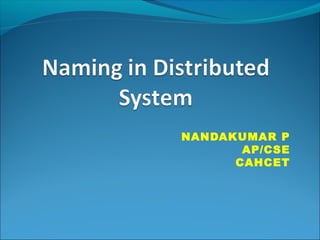The document discusses the importance of naming entities in distributed systems, covering concepts such as identifiers, name resolution, and name spaces. It explores mechanisms for mounting file systems, the global name service (GNS), and various implementations of name resolution, including DNS. It also addresses challenges related to locating entities, handling unreferenced objects, and existing methods like forwarding pointers and hierarchical approaches.

















































